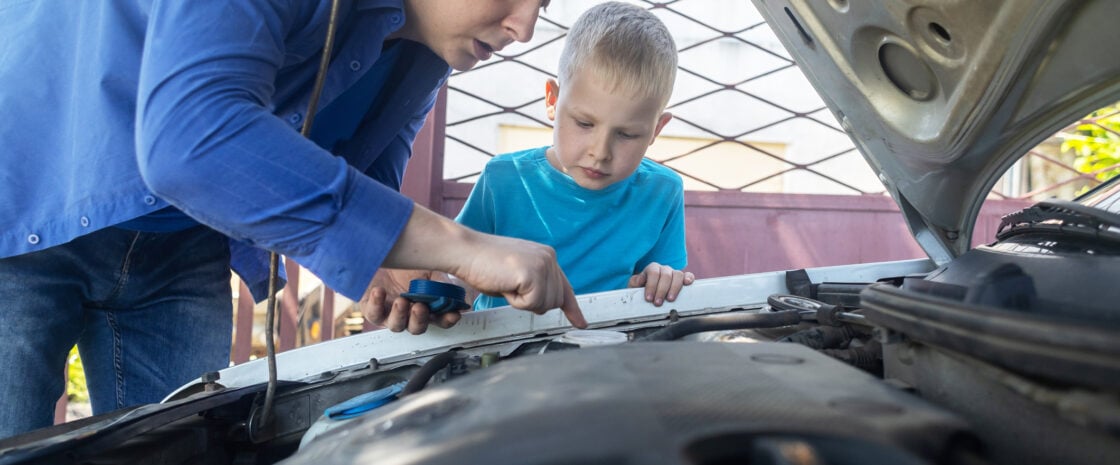As trade tensions rage on between the United States and Canada, expect car ownership to get more expensive.
While you can’t control international trade wars, here are five things you can do to save money on regular auto expenses.
1. Stay on top of routine maintenance
Skimping on regular maintenance like oil changes, topping off transmission fluid and tire rotations is a sure way to lose money.
“Cars that are not well-maintained can end up costing up to 20% more in bigger repairs,” says Saijal Patel, founder and CEO of Saij Wealth Consulting, a financial consultancy and education platform.
Delaying your next car purchase is another money-saving side effect of keeping your current car running for longer. Analysts predict that new car prices in Canada will jump 5% to 10% this year, according to Oxford Economics.
Meanwhile, the average retail listing price of used vehicles reached $38,100 in the week ending May 24, compared to $34,950 at the end of March (before tariffs went into effect), according to Canadian Black Book.
2. Learn basic repair skills
Like many things, it’s cheaper to make minor auto repairs yourself, if you can. Start small, by learning to swap out light bulbs, air filters and wiper blades.
If you have a specific issue, try YouTube. Mechanics and well-known brands offer videos about how to do many types of repairs and improvements.
To dive deeper, check your local library for online courses about car repair. Some auto parts stores have tools you can borrow or opportunities for hands-on learning. There may even be a local DIY club near you; they often welcome people of all skill levels.
3. Shop around for insurance coverage
Auto insurance premiums hit a peak increase of 9.6% year over year in both July and September 2024 — the largest annual gain seen in a decade, according to Statistics Canada. With higher auto part prices expected from tariffs on steel and aluminum, higher repair and insurance claims will likely follow.
If you haven’t looked at your auto policy in a while, shop around with multiple insurers and check if you still have the best deal. Compare what is and isn’t covered, deductibles and premiums.
Patel recommends asking about discounts for theft prevention measures (such as a car alarm) and enrolling in safe driver programs. Also, bundling your auto and home policies and paying your premium upfront in a lump sum versus monthly payments might earn you additional savings.
4. Find alternative sources for repair parts
Before tariffs took center stage, the cost of vehicle parts, maintenance and repairs rose by 22.3% from 2019 to 2024, according to data from Statistics Canada. Now, car owners can expect those costs to climb even higher.
Imported parts typically carry higher costs. Buying aftermarket or used parts when it’s safe and feasible might save you some cash. Before you go this route, consult with a mechanic you know and trust who can help you source parts from a reputable supplier.
Be careful about buying aftermarket parts on websites like Craigslist, Facebook Marketplace or eBay. In addition to consulting with a mechanic, check online reviews for established auto parts suppliers. Many retailers offer a money-back guarantee, full refunds within a certain time frame and free shipping. For more complex parts, make sure there’s a manufacturer’s warranty before purchasing the part.
5. Keep your gas bill in check
Optimizing your gas purchasing and usage can keep your gas costs down.
“Think about when you’re filling up for gas,” Patel recommends. “Prices are typically a few cents per litre cheaper in off-peak hours such as the evening or on Sundays.”
She also recommends using apps like GasBuddy or Google Maps to find the cheapest gas nearby.
Once you’ve bought gas, try to use it more efficiently. Natural Resources Canada offers a slew of tips to use less fuel. The agency notes that “varying your speed up and down between 75 and 85 km per hour every 18 seconds can increase your fuel use by 20%.” Instead, set the cruise control when you’re on the highway. Also, take about five seconds to accelerate your vehicle up to 20 km per hour from a complete stop; this also improves your fuel efficiency.
Earn rewards every time you fill up your tank.
See our picks for the best gas credit cards in Canada.
Bottom line
It’s not clear how long tariffs will be in effect, but your best hedge against rising costs as a car owner is to stay informed, maintain your car regularly and shop around when you need auto repairs or parts.
If you anticipate needing to replace your car in the next year or two, keep in mind that new cars typically lose 20% of their value within the first year. With tariffs driving up the sticker price on new cars, consider buying a used vehicle instead.

4 Influencers Who Want You to Spend Less: Brennan Coker
Meet Brennan Coker, who rejects flashy spending in favour of a disciplined, sustainable lifestyle.

Will a Grocery Aisle Boycott of U.S. Goods Save You Money?
Breaking down the loonies and cents of boycotting American goods and spotting bonafide Canadian products.

A Subscription Audit Saved Me $1,800 a Year — Here’s How to Do It
Eliminate subscription bloat by reviewing bank statements and digital wallets, identifying recurring charges and downgrading or cancelling what you no longer need.

7 Tips to Help Renters Save for Their Future Home
Skyrocketing rents are making it even harder for prospective home buyers to save. Stashing funds in the right accounts, and getting help from family or roommates, are two strategies that can give you an edge.

